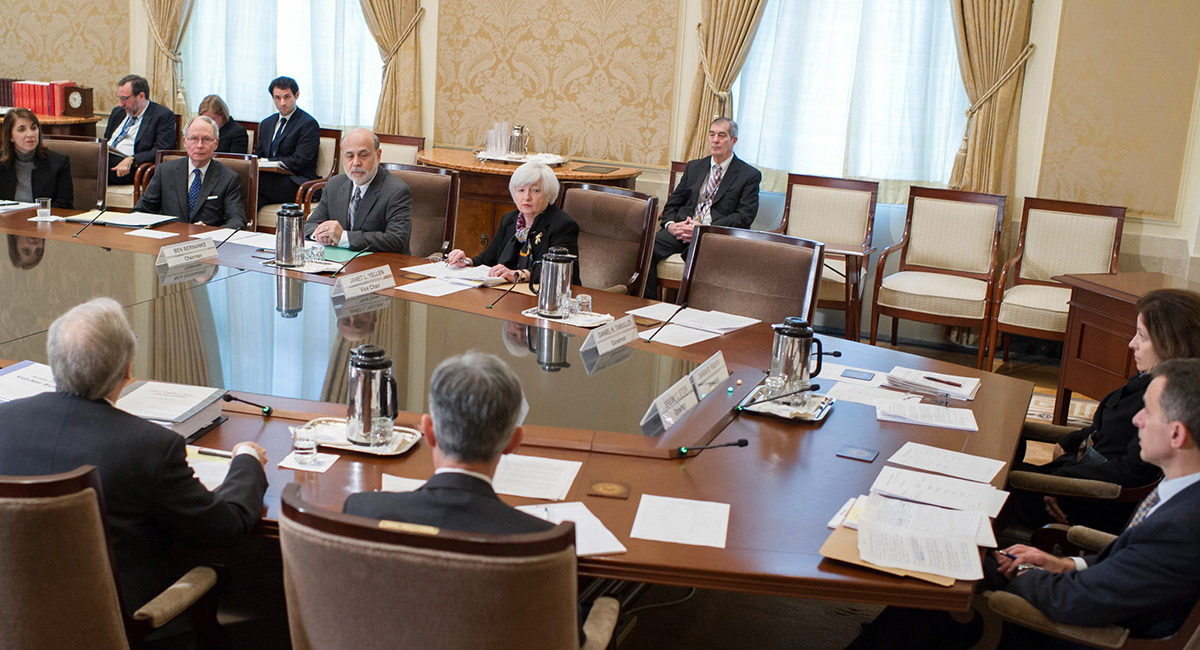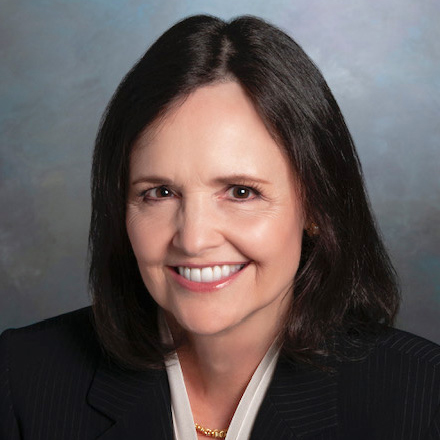It’s nail-biting time again, with stock markets flailing early in the new year after racking up double-digit returns for 2014. If investors find it baffling, it’s because the U.S. economy appeared to be strengthening, with improved corporate earnings and increasing consumer confidence. It was beginning to appear that an encouraging resilience had taken hold.
But the thing about a global financial crisis is that, while everyone senses in an existential way that it could be looming on the horizon, no one actually sees it coming. Investors are always astonished by a sudden meltdown that kneecaps financial markets and then whole economies.
It’s instructive to recall that on July 18, 2007, then-Federal Reserve Chairman Ben Bernanke told Congress: “Overall, the U.S. economy appears likely to expand at a moderate pace over the second half of 2007 with growth then strengthening a bit in 2008 to a rate close to the economy’s underlying trend.”
The following year, of course, a global financial crisis proceeded to devastate whatever productive growth the real economy might have otherwise achieved. Bernanke now describes what happened on his watch in quite different terms: “September and October 2008 was the worst financial crisis in global history, including the Great Depression.”
So can we accept that the head of the Federal Reserve is not omniscient? Investors may insist they do not hold Bernanke personally responsible for the crash (even as many are quick to malign his predecessor, Alan Greenspan). Somehow it’s more acceptable to attribute the financial debacle that inflicted so much damage on the global economy to a malevolent act of nature or statistical anomaly—black swans and all that.
Even so, those same investors expect current Fed Chair Janet Yellen to get it right. While acknowledging that she has a serious challenge in deciding when (or whether) to raise interest rates, they are mostly concerned about how well the Fed chief signals the actions she will take to override market forces of supply and demand for credit. In short, her job is to finesse the ability of the U.S. central bank to determine the price of loanable funds while deftly managing the expectations of investors.
The problem, though, is that the Fed is not the only central bank out there trying to stage-manage the supply of money and credit to improve economic performance. The European Central Bank, headed by Mario Draghi, is expected to accelerate its efforts to juice growth through low-cost credit on Jan. 22, when it will likely announce a broadening of its asset-purchase program, including purchases of government debt. The Bank of Japan also appears slated to double-down on its monetary stimulus policies by purchasing government bonds of longer maturities.
So now we have a new potential flashpoint for the next global financial crisis—as divergent phases of monetary activism by the world’s central banks spawn an interest-rate gap that drives currencies in different directions. Claudio Borio, who heads the Monetary and Economic Department of the Bank for International Settlement in Basel, Switzerland, warned last month that rapid appreciation of the dollar as investors chase higher U.S. interest rates could make it difficult for emerging market borrowers with large dollar-denominated loans to pay back their obligations. Currency mismatches could lead to tightening credit conditions worldwide, triggering a breakdown.
No wonder financial markets are operating on a hair trigger these days, with every new rumor about possible future actions by central banks fueling huge movements from one trading day to the next. Alarmed by growing volatility, central bankers are increasingly compelled to offer soothing statements to assuage market concerns, as if in a private dialogue with antsy investors. As Borio noted: “The markets’ buoyancy hinges on central banks’ every word and deed.”
Is this any way to manage international monetary and financial relations in today’s world? Does it make sense for a highly integrated global economy to remain so vulnerable to an unforeseen (though wholly predictable) financial crisis?
Given the painful episode of these post-crisis years, one would have expected global leaders to call into question existing international monetary arrangements—not only to prevent another debilitating disconnect between credit flows and real economic activity, but also to establish an orderly and stable foundation for global economic growth. Instead, we see a continued reliance on the acumen of central bankers to avert economic disaster through monetary activism—despite the track record of those who wielded total discretionary authority.
The irony is, far from mitigating the dangers of misallocated capital and currency gyrations, central banks largely engineered the distorted price signals that resulted in destabilizing global imbalances. Monetary policy, by definition, means imposing the policy preferences of central bankers over the collective wisdom of borrowers and lenders; the more interest rates are diverted from their natural path through central bank intervention, the more it alters normal risk-return parameters.
Deviations from rational investment criteria lead to financial market confusion and instability—and suboptimal economic performance. How can anyone recognize a truly promising investment opportunity somewhere in the world when exchange rate movements caused by differential monetary policies affect the bottom-line return more than comparative advantage?
It’s time for policymakers to focus on the need for coherent international monetary relations. For all the rhetoric about free trade and a global economy, we have failed to address our current perilous situation, wherein one central bank’s announcement of its latest quantitative easing program is viewed by another central bank as a declaration of currency war. The economy can only lose—once again—if a major financial crisis extinguishes a nascent recovery.









